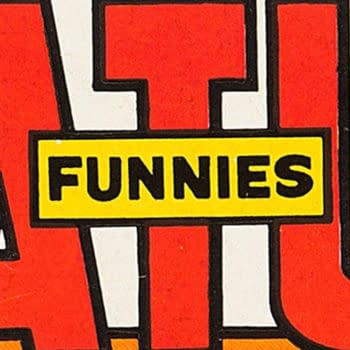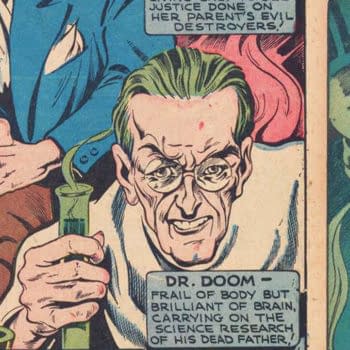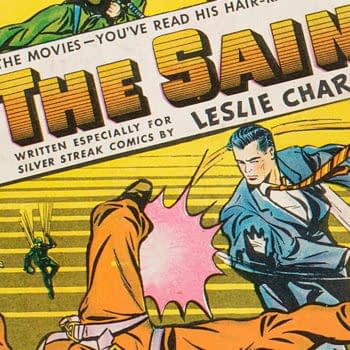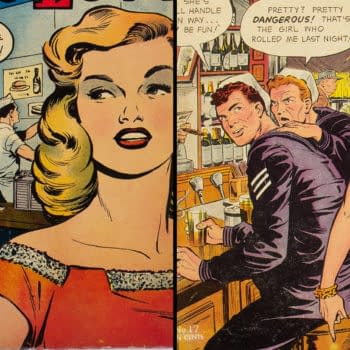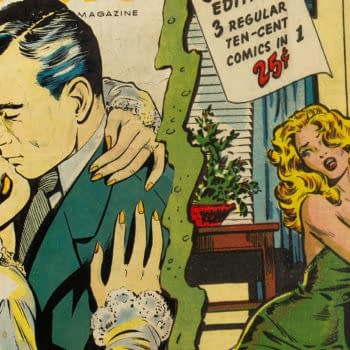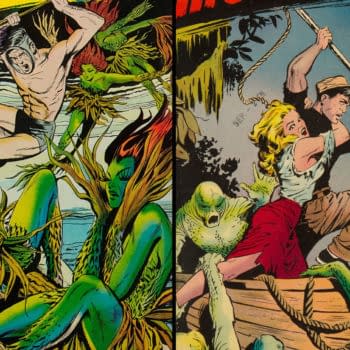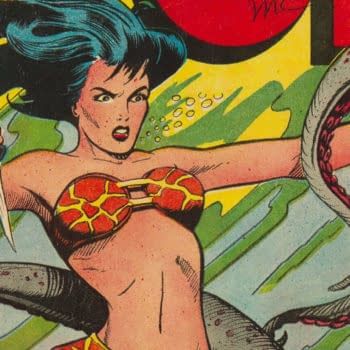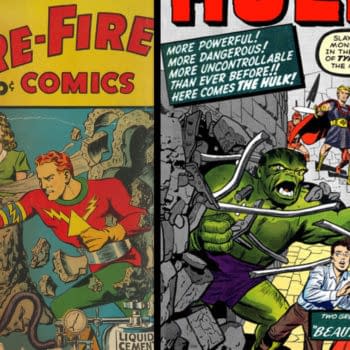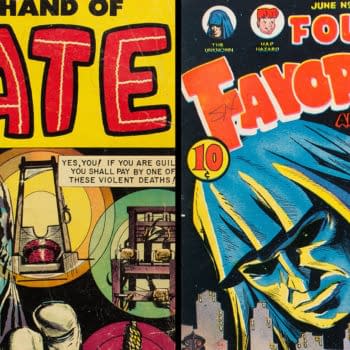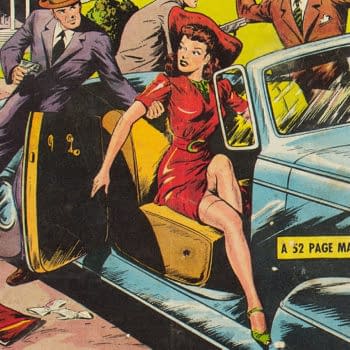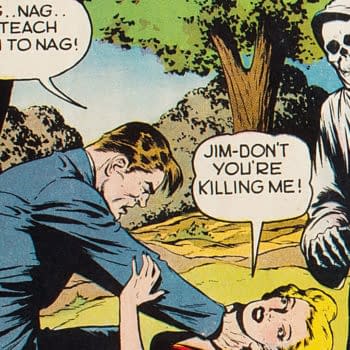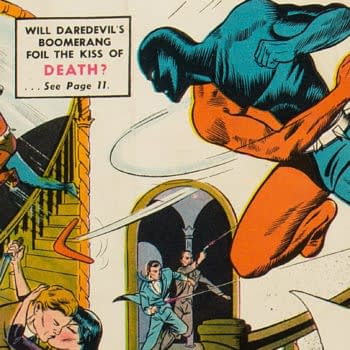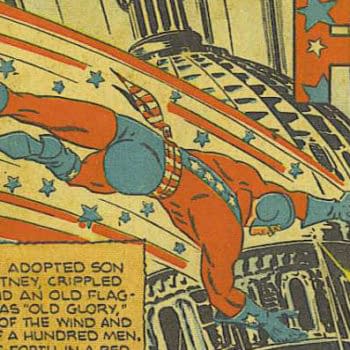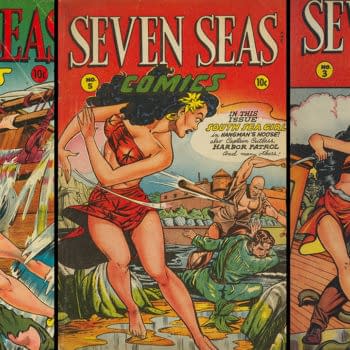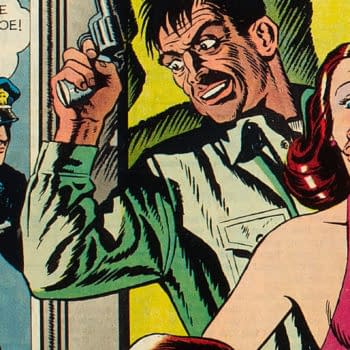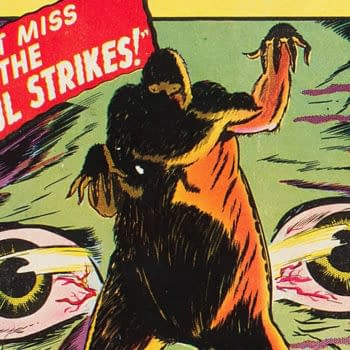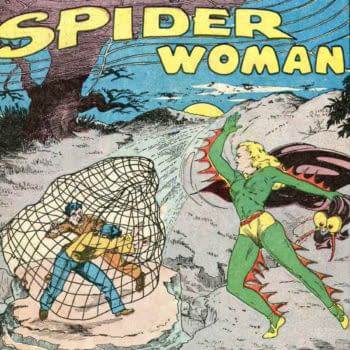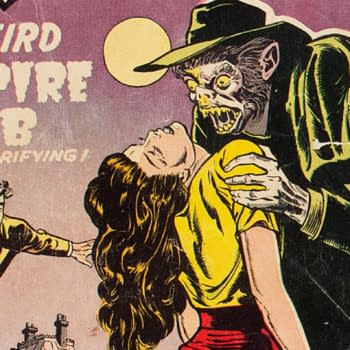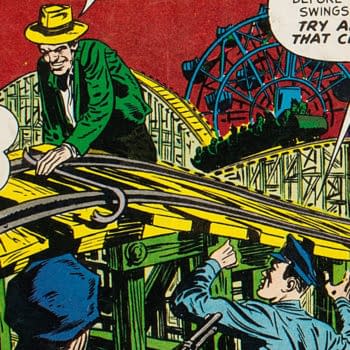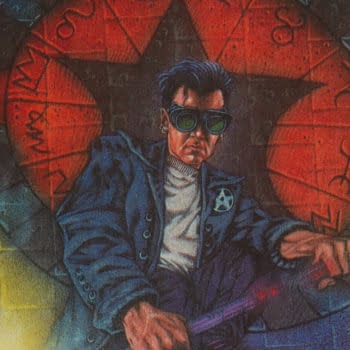Busy Arnold's title transition from Feature Funnies to Feature Comics was sparked by a forgotten legal battle of the Golden Age.
Mark Seifert Archives
Golden Age comic books' first masked hero The Clock got a second lease on life when he landed at Quality Comics with Feature Funnies #3.
Frank Frazetta's Ghost Rider cover on Magazine Enterprises' Tim Holt #17 proved to be a pivotal moment for the western franchise.
Harry A. Chesler's Yankee Comics featured a character named Dr. Doom and a super-soldier serum derived from the strength of WWI heroes.
Lev Gleason described Silver Streak Comics' The Saint feature as "the most expensive feature ever to appear in a comic magazine."
What's the secret behind Matt Baker's cover for Secrets of True Love 1 from St. John Publications? The death of Archer St. John set it motion
St. John's All-Picture All-True Love Story #2 with Matt Baker artwork is so elusive that nobody knew about it for 30 years.
The history suggests that Matt Baker was brought in to cover St. John's Amazing Ghost Stories to provide it with a very different look.
As the volume of Matt Baker's Fiction House contributions declined, he worked with other publishers, leading to his Fox Feature Syndicate era
Ace Periodicals' Sure-Fire Comics series featured the superhero Flash Lightning, whose origin is similar to the later Dr. Fate origin.
The mysterious Ace Periodicals character The Unknown narrated Four Favorites stories, then jumped to Hands of Fate as Fate himself yrs later.
Mysterious publishing switches, a missing issue, and a spin-off all contribute to the twists and turns of the Captain Battle saga.
Crime Smashers was a 15 issue crime comics series that included art from Joe Kubert and Wally Wood, from a company owned by Harry Donenfeld.
Gangsters Can't Win was a title from the late-1940s crime comic book era which featured some classic covers and stories.
Regular Crimebuster foe Iron Jaw from Boy Comics, might be one of the most vicious supervillains of the war era.
D.S. Publishing's short foray into comic books includes an extensive line of crime comics like Exposed, which came to Wertham's attention.
After taking on the likes of The Claw and Hitler, the Golden Age Daredevil got down to avenging his dead parents by taking on all criminals.
The Flag's abilities included trailing stars & stripes while using his power of flight & an American Flag birthmark that warned him of danger
In his debut in Air Fighters Comics #2 from Hillman Periodicals, Airboy helped a monk in California build an advanced batwing fighter plane.
The short-lived title Seven Seas Comics was a turning point of sorts in the context of Matt Baker's career.
What would a 1950s crime comic by a group from the radio business be like? Turns out The Perfect Crime is a classic pre-Code crime series.
Subtitled "Weird and Strange" on covers, Superior Comics' "Mysteries" is as obscure as Pre-Code Horror gets -- and with lots of skulls.
In 1949, Timely/Marvel transitioned away from superheroes and did a head-first dive into comic book horror, and Marvel Tales was a key part.
Chesler's Major Victory Comics series from 1944-1945 is largely composed of reprints, with a notable exception: the debut of Spider-Woman.
A little known title from an incredibly obscure publisher, Lucky Comics has stand-out covers and stories from Henry Kiefer.
Hard Boiled Detective Ken Shannon became a Quality Comics star in the early 1950s featuring art by Jack Cole and Reed Crandall.
Crime comic title Justice Traps the Guilty was launched by Joe Simon & Jack Kirby in 1947, and continued for an impressive 92 issues.
James Robinson and Tony Harris defined Starman for a new DC era in 1994 while preserving the character's Golden Age roots.
Jose Gonzalez's painting of Vampi initially used for cover of Vampirella #19 went on to become one of the most iconic images of the character.
The history of emoticons has a lot of twists, turns and branches, but this set of 42 3D smileys was a significant development towards emojis.


